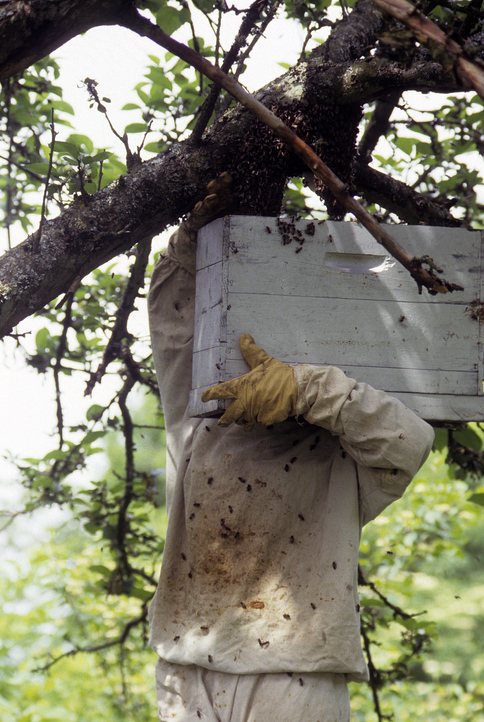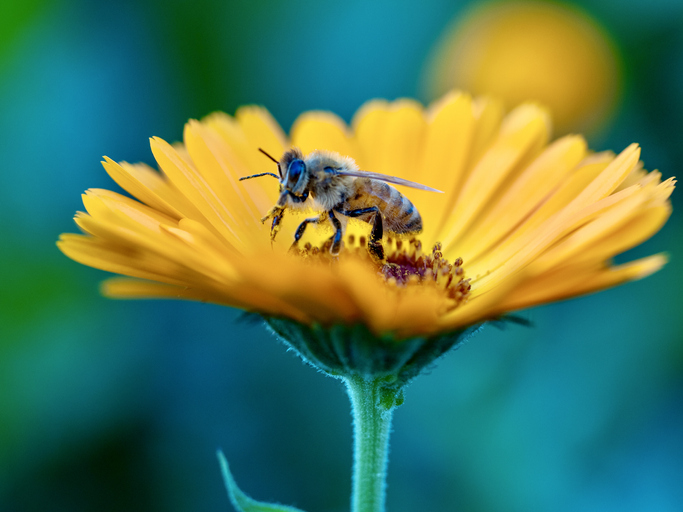What islive bee removal?
Live bee removal is the process of removing a bee colony from a location without harming or killing the bees. At Mimi’s Bees, removal is performed by an experienced beekeeper or our partner bee removal pros who are trained in live bee removal. The process usually involves identifying the location of the bee hive, carefully removing the bees from the hive, and then transporting them to a new location where they can live safely and continue to thrive. The goal of live bee removal is to preserve the queen, her brood (baby bees) and the workers, which is important for preservation of the colony enabling it to continue to thrive. Even with the loss of the queen, bees can be combined with another colony or given a new queen. Whether we remove the bees or we refer you to one of our trusted partners, the bees that are removed come to our Temecula apiary in wine country where they are established in a new hive box or given to a trusted local beekeeper.f You can be confident that the bees are not destroyed, released or poisoned. We are committes to honey bee conservation. Save the bees!

Does live bee removal cost money?
In general, yes, live bee removal typically involves some cost. However, the exact cost can vary depending on a number of factors, such as the location and size of the bee hive, the time of year, and the location of the hive. In some cases, bee swarm removal may be free if the swarm is in an easy to reach location and within a few miles of our location in wine country.
Can I keep the honey?
We don’t recommend consuming honey from live bee removals because it is unknown if the hive has been exposed to pesticides. We prefer to give the honey back to the bees. We cannot put the honey comb in the new hive box because it will drip out onto the bottom board and drown the bees. We can drip feed the honey back to the bees and they will store it back in the hive.

Where are the bees relocated?
Initially, we bring the bees back to our apiary and provide immediate food and water. Swarms are either established in a new hive in our apiary or rehomed to other trusted beekeepers in our area.
Do you kill the bees?
We try not to kill any bees during a removal, however, there will be some casualties from accidental squishing. This does not affect the health of the colony. In a healthy colony, bees die every day. As many as 1,000 per day could die off in a typical colony. Queen bees lay upwards of 1,500 eggs per day so the colony is replenished with baby bees in excess of the die off count.
Are pesticides used during bee removal?
No. We never use pesticides to control or remove bees.
Do I have to disclose that I tried to poison the bees before calling for professional bee removal?
Yes. Bees that have been exposed to pesticides need to be isolated so they don’t expose healthy colonies. The comb and honey in the poisoned hive needs to be disposed of to avoid further exposure.
What is the difference between a bee swarm and a bee hive?
A bee swarm is a temporary cluster of bees that forms when a colony of bees splits in two. This typically happens when the colony becomes too large and the bees need to create a new home. A bee swarm can consist of thousands of bees and is usually visible as a large clump or mass of bees hanging from a branch or other surface.
A bee hive, on the other hand, is a permanent structure built by bees to house their colony. A bee hive is typically made of beeswax and consists of a series of interconnected cells or compartments. The bees use these cells to store honey, pollen, and eggs. Unlike a bee swarm, which is temporary and can move to a new location, a bee hive is a fixed structure that provides a permanent home for the bees.
How do you remove bees without harming them?
Depending on the situation, bees can be removed by hand or with a bee vacuum is a device used for the live removal of bees from a location. The vacuum has suction control so the bees can be sucked up gently and deposited into the container. The bees can then be transported to a new location and rehomed. Bee vacuums are used by beekeepers as a way to safely and humanely remove bees without harming them.
What are Africanized Bees?
Africanized bees, also known as “killer bees,” are a hybrid of the European honey bee and the African honey bee. They are known for their aggressive behavior and their tendency to attack in large numbers when provoked. Africanized bees were first introduced to Brazil in the 1950s, and have since spread throughout much of South and Central America. They are also found in parts of the southern United States. Because of their aggressive nature, Africanized bees can be very dangerous to people and animals, and should be handled with caution.